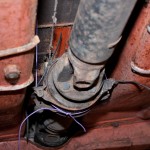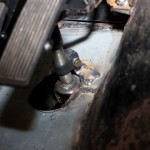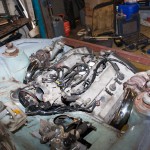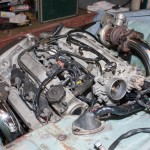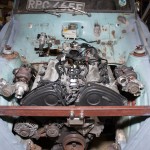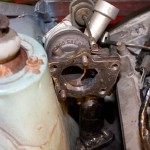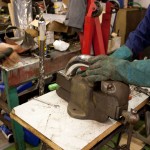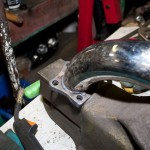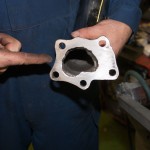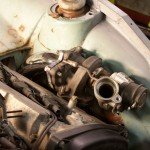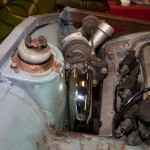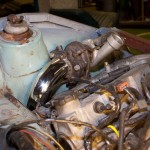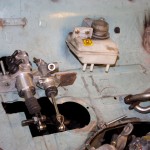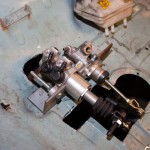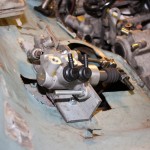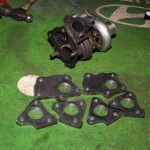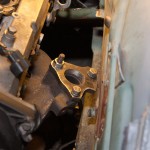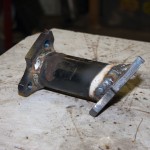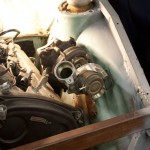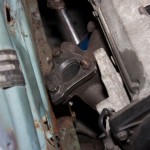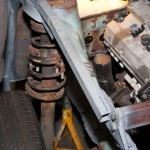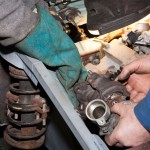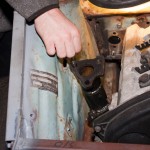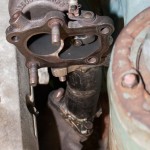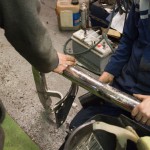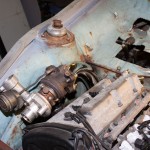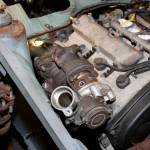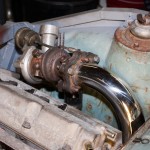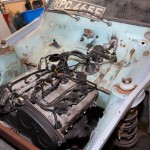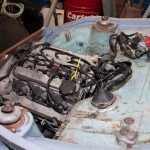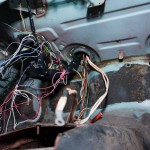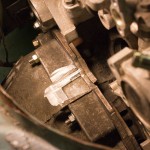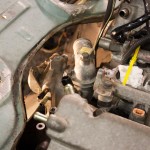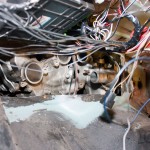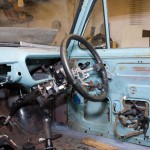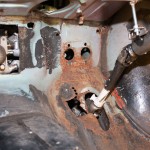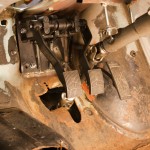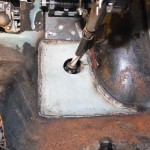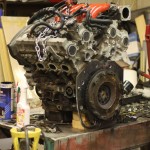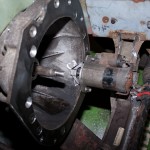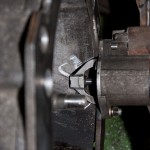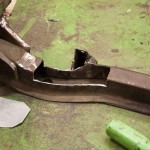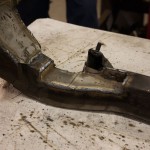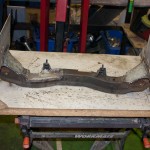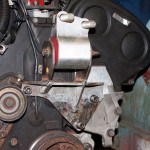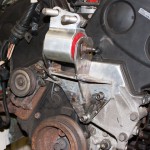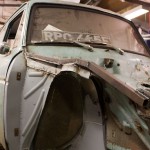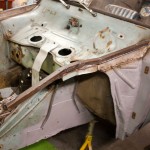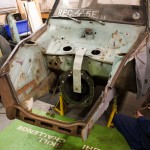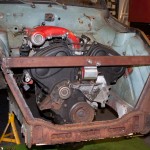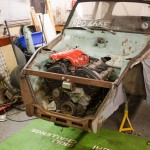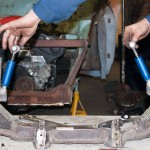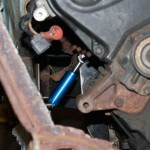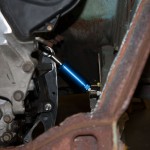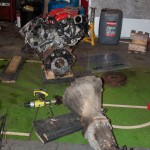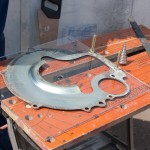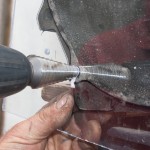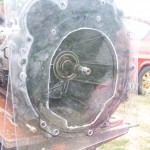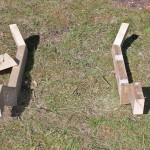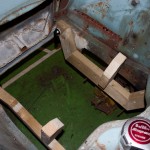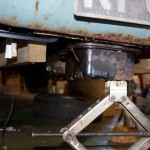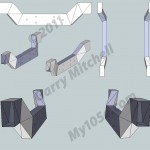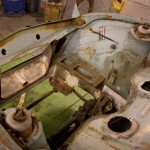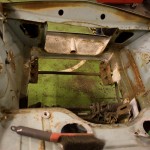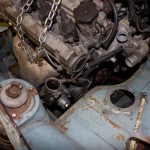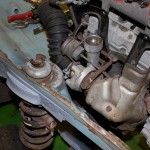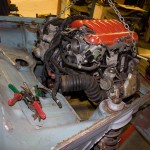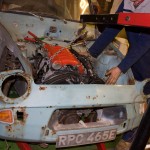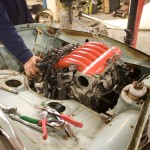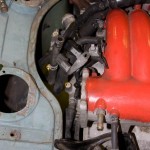It’s been a while since the last update, however it’s not been that I’ve not been doing anything…
We took our perspex templates to a local engineering firm, and asked for exact copies but in something a bit more suitable for the job – 8mm steel. After leaving it with them for a few weeks, we received back some goodies!
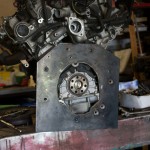
And the equivalent was bolted to the gearbox – an interesting tidbit, the bolts we wanted to use are M10x1.25 thread countersunk approx 2″ long, so we went to a local fastener supplier, to be told “no one makes them” – a couple of days later my dad was removing a Hyundai gearbox and he removed something that apparantly doesn’t exist… so we put in an order at the parts desk and within a few days had enough to bolt up the engine and the gearbox adapter plates!!
I picked up a VR-4 flywheel (the engine came from an automatic), but with the 8mm adapter plate, the back edge of the flywheel was a bit too close for comfort, so we had made up a 5mm spacer to bring the flywheel away from the block.
We then hit a snag – the VR-4 flywheel is 240mm (and has a pull-type clutch), and the 200SX S13 clutch is 225mm. A quick post on SXOC and I was informed that an S14 clutch is 240mm, but won’t fit inside the S13 bellhousing. So a VR-4 clutch wouldn’t work because it’s the wrong type, and an S14 clutch wouldn’t work because it won’t fit.
The n/a Galant and the FTO both share the 6A1 series engine, and both have 225mm clutch. So I borrowed an FTO flywheel and clutch, removed the friction plate and put in place the 200SX friction plate.
This then allowed the engine to transfer drive through as far as the gearbox input shaft.
In a RWD box, the input shaft is supported in the end of the crank, but in a FWD or transverse gearbox (as in the VR-4) has the input shaft supported both ends within the gearbox itself, so there are no spigot bushes, and therefore no way to mount one into the VR-4 engine. So, again to our local engineering firm, who turned us up a spigot adapter to fit the end of the crank, and to fit the brass spigot bush from the 200SX.
With all this in place, it was time to try mating the two together.
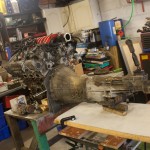
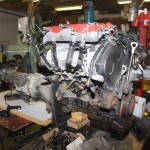
They slotted together *perfectly*!
A ratchet on the end of the crank, and the gearbox in gear, and the output shaft turned – a joyous occasion!
The FTO clutch cover had the fingers further towards the centre than the 200SX clutch, so the standard 200SX release bearing would have not worked. And a Mitsubishi release bearing wouldn’t have fitted over the input shaft.
So, we’ve cannibalised the original 200SX release bearing for it’s casing, and a Mitsubishi Shogun release bearing for the bearing part, and we’ll send that off to have an insert made to hold the Shogun bearing in the 200SX casing.
It was then time to put the two units together, in the car. First up was the gearbox.
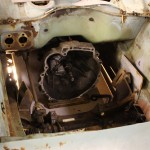
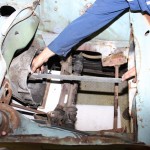
The gearbox slid into position almost perfectly. The tail sits just through the crossmember, and clears the tunnel! We used a nice straight bar to align the input shaft with the crank handle hole on the chassis.
The only bit we needed to trim was for the gear lever to come through – just in front of the handbrake, and almost exactly in line with the steering wheel’s current location!
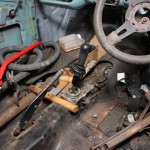
It was then time to drop the engine into place, and bolt it up.
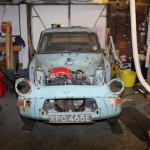
We then went under the car to look at mounting the gearbox. Unfortunately the standard Anglia gearbox crossmember mounted about 1.5″ too far forward, so we decided to just make our own to utilise the original gearbox mount.
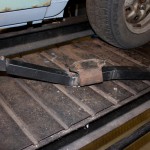
So with the engine and gearbox bolted together, and the gearbox now mounted to the chassis, the next thing was to see how much length from the 200SX propshaft we would need to remove to make it fit.
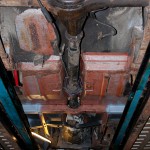
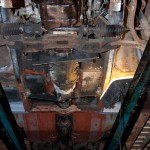
To our utter shock and amazement… it fitted absolutely perfectly with no cutting required at all! Even the centre mount on the propshaft come up below 2 small screw holes in the tunnel so I could run a small bit of wire around it to hold it up!
VR-4 Engine + FTO Flywheel + 200SX clutch friction plate + FTO clutch cover + Shogun/200SX hybrid release bearing + 200SX Gearbox + 200SX Propshaft + Anglia Rear Axle

